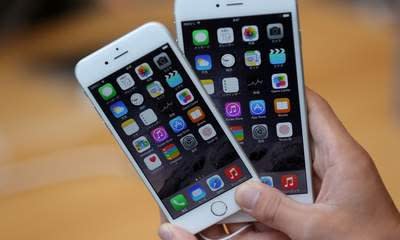What Happens When iPhone's 'Legs' Give Out?

Tot up the market values of Tesco (Xetra: 852647 - news) , Sainsbury's and ITV (LSE: ITV.L - news) : that's how much was wiped off Apple (NasdaqGS: AAPL - news) 's share price in after-hours trading on Tuesday night - around $53bn (£34bn).
Or, put in tech company terms: two Twitters.
It's still only a 7% fall for the iPhone maker, but the share slide followed an impressive set of third quarter results. How come?
The third quarter is usually Apple's slowest sales period, but it was a record - with revenues of $49.6bn, up 45% last year.
The company shipped 47.5 million iPhones, up 35% on the previous year.
These days, Apple is the iPhone - it's responsible for more than 60% of its revenues.
And that's probably what led to the share slide. iPhone earnings were below average in the US and Europe. Only China bucked that trend, with a 112% increase in revenue there.
Apple thinks China will eventually become its biggest market, but it seems that Apple's four other regions have reached iPhone saturation. For a company so reliant on one product, what happens when you get the same situation in China?
New (KOSDAQ: 160550.KQ - news) products could offer new forms of revenue: it's been reported that Apple's plans for a car are growing, with the poaching of an executive from Chrysler (Xetra: 710000 - news) for its Project Titan.
The results didn't offer much information on its latest new category, the Apple Watch. It was bundled in with 'Other' revenues, alongside Beats by Dre Headphones and Apple TV.
That category was up 49% - an improvement for sure, but then the Apple Watch didn't exist a year ago.
Apple's Chief Financial Officer did tell The New York Times that Watch sales for first nine weeks exceeded those of the iPhone and iPad in first nine weeks. (Speaking of the latter, the results showed that the iPad - Apple's latest new product category prior to the Watch - is already dying a slow death. Sales were down 18% year-on-year.)
Nine weeks seems like a pretty arbitrary period. It's conceivable that after such a hyped launch, sales might have fallen off a cliff.
But the comparison with the iPhone is a good one. The iPhone initially perplexed many observers when it was released in 2007. Six generations later, and it's the biggest product of all time.
Can Apple do the same with the Watch? It has to, as a nice quirk of timing showed.
Microsoft (NasdaqGS: MSFT - news) released its results at the same time as Apple. They included a huge $7.5bn write-down on Nokia - once the undisputed king of mobile.
Nokia failed to manage the transition to smartphones. In 2000, its market cap was $245bn – a point Apple reached in 2009, then kept accelerating past.
Tim Cook said on the earnings call: "We think the phone has a lot of legs to it."
But he knows that Apple needs to be ready when those legs give out, to survive the transition to the next dominant product category in a way that Nokia didn't.
The iPad wasn't that category. Is the Watch the next iPhone, or the next iPad?

 Yahoo Finance
Yahoo Finance 